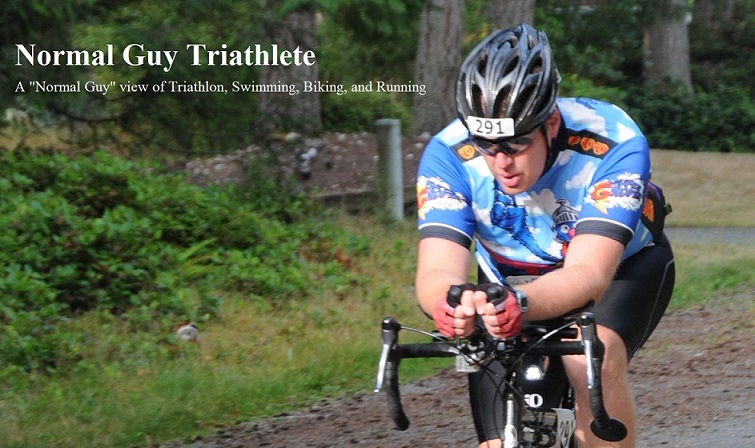Ride Date: 15 September 2011
Starting City: Bandon, OR
Ending City: Powers, OR
Ride Stats:64.91 miles, 2,171' of climbing, 4:20:13
After my experience the previous night (local harbor fog horn kept waking me up every hour or so) I bought a couple sets of ear plugs to try out. It turns out the ones with the flat ends form up nicely in your ears and allow you to sleep on your side, my preferred position. I was warm and toasty, thanks to several more layers, and got my first good nights sleep in quite some time. I slept so good that I didn't want to get up in the morning, which made for a later start at 7:30 than I had hoped for.
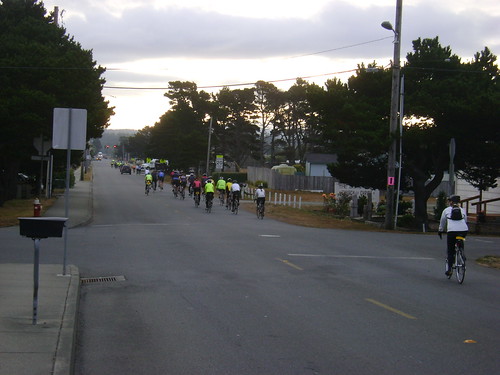
Riding down 11th Street in Bandon, Oregon, as we begin Day 5.
For today's ride I planned to take it easy and save up my legs for the big climb on day 6. That meant slow speeds and lots of photo ops.
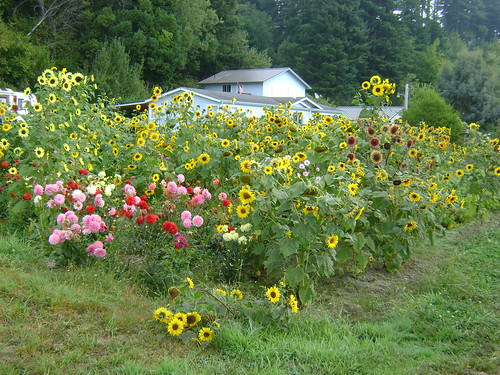
Flower garden along North Bank Lane just west of Bandon, Oregon, on our way to Powers.
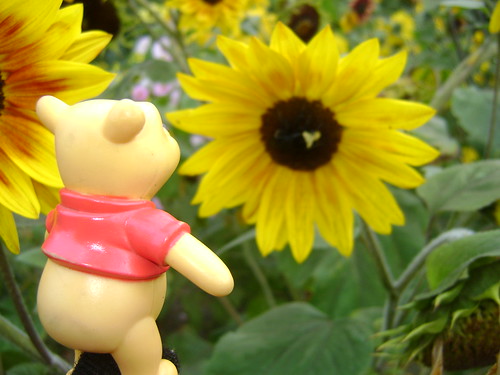
Flower garden along North Bank Lane just west of Bandon, Oregon, on our way to Powers. Pooh Bear is asking directions to the nearest bee hive. Hmmmm. Is honey on his mind?
The Coquille River wound it's way toward the ocean and we got to see it at a leisurely pace.
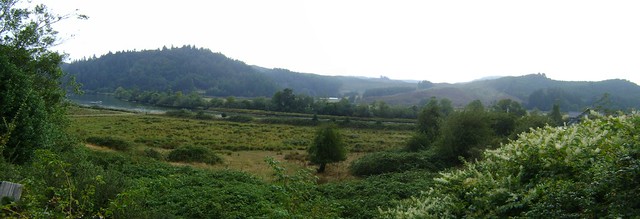
The Coquille River Valley on the way to Powers, Oregon.
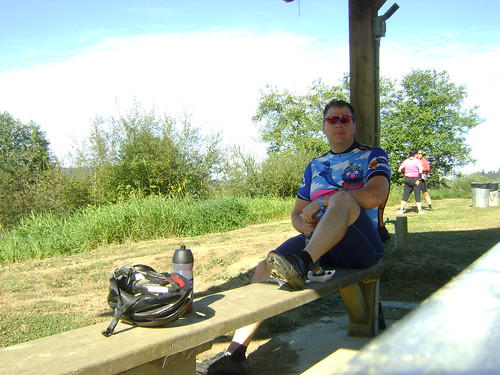
A break at Sturdivant Park in Coquille along the Coquille River.
At the first food stop I ran into what I called the "Family Tandem". It was a family of 4 riding Cycle Oregon together. There was a Dad up front, Mom in the stoker position, the older child (5 years old?) in the back seat, and a young child (3 years old?) in the Burley bike trailer. The cool part was how they entertained the kids: an iPad with a solar charger on top of the trailer.
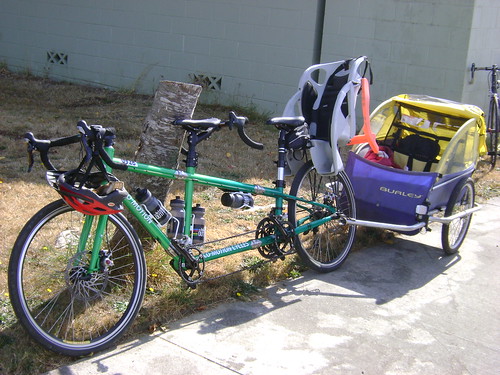
"The family tandem" at the Day 5 lunch at Sturdivant Park in Coquille along the Coquille River. This family was a dad and mom, 5 year old son on the back, and 3 year old son in the burly trailer. There are solar panels in the top of the trailer that charged an iPad used to entertain the kids.
At the Lunch stop in Myrtle Point I found what would turn out to be one of the highlights of the entire week: a logging museum. OK, you are probably thinking I've lost it, until you see the shape of the logging museum. Does it look familiar?
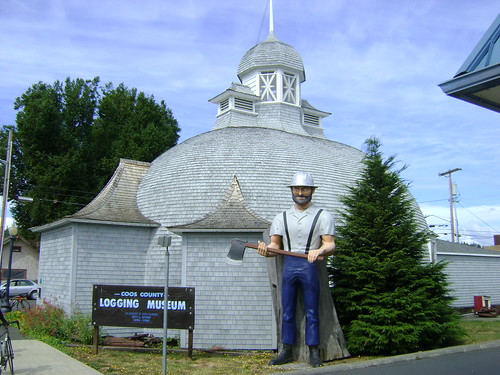
The Myrtle Point Logging Museum, modeled after the Tabernacle in Salt Lake City.
This particular building was originally constructed by Mormon settlers around 1910 to look like the Salt Lake Tabernacle in Utah, only on a much smaller scale. It was used as a church for several years but it was abandoned for the exact opposite reason that people flock to its Salt Lake counterpart: the acoustics were absolutely horrible. Speakers at the pulpit could barely be heard by the first few rows while the people in the rear would ask the speaker to lower their voice. The rounded shape of the ceiling caused voices to echo and carry in weird patterns. After only a few years it was no longer used as a church.
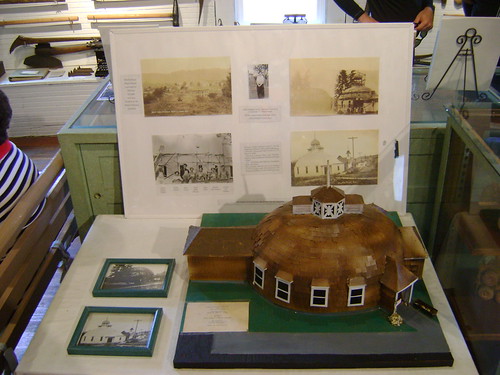
Model of the Myrtle Point Logging Museum, patterned after the Tabernacle in Salt Lake City.
After years of various uses, including as a church, private residence, and an American Legion Hall. In 1987 it was given to the city of Myrtle Point and remodeled to become the Coos County Logging Museum.
With my Dad's history in the logging industry I found the exhibits inside to be fascinating and spent quite a bit of time looking around. The acoustics were really weird. You could be standing on one side of the room and hear a conversation going on on the other as if they were standing next to you.
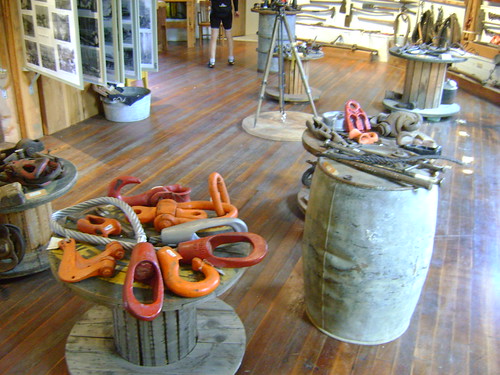
Rigging, tools, and pictures at the Myrtle Point Logging Museum, Myrtle Point, OR.
They had a large collection of wooden relief carvings, logging artifacts, and a wide selection of old photographs from around the area and of the museum building itself. With its rich logging heritage there is a lot to tell.
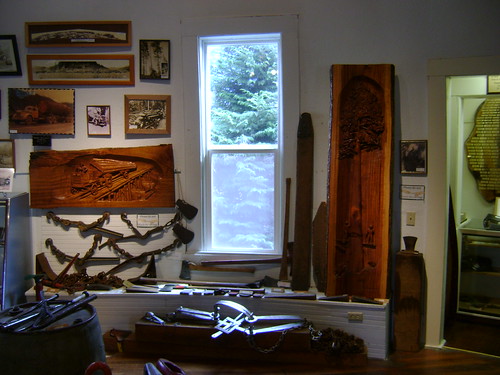
Relief carvings, traps, pictures, and toolsThe Coos County Logging Museum, Myrtle Point, OR.The photo collection was elaborate and well documented: I could have spend all day on that alone but i still had 20 miles to go. Just east of Mytle Creek a spotted a Cycle Oregon sign that said, "Photo Op Ahead!" Since I was already late for the day, at least according to my goals, I stopped for a quickie. Boy, was I glad i did. The photo op was one of the last wigwam burners in Oregon. As recently as 25 years ago these were part of every mill in Oregon. As efficiency and recycling reduced the waste in the lumber production process mills tore down their wigwam burners. These icons of classic lumber towns are very hard to find.
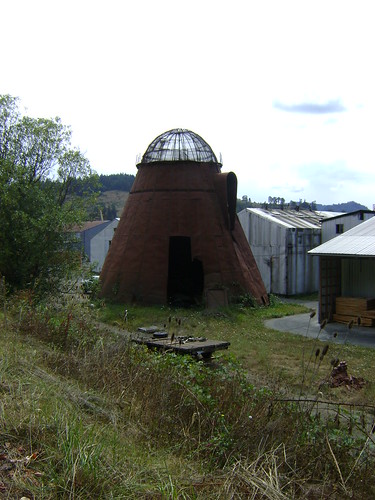
Wigwam burner at a lumber mill just east of Myrtle Point, OR.
After the lunch stop of the day I came across an accident: they rider on a back board being loaded into an ambulance. Later on I heard that the rider had suffered a heart attack while riding but I don't know if that is true or not.

Accident on the Powers Highway between Myrtle Point and Powers, OR.
Our campsite for the night was Powers County Park, the site of a rather large lumber mill that built the town. When the mill shut down most of the jobs went with it and the town nearly died. Now, as with most former mill towns in southern Oregon, they rely heavily on tourism. This is the main reason that Cycle Oregon was created.
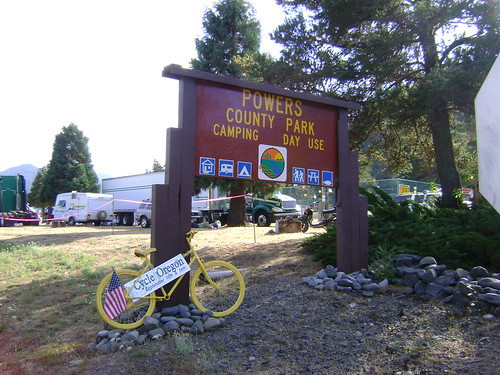
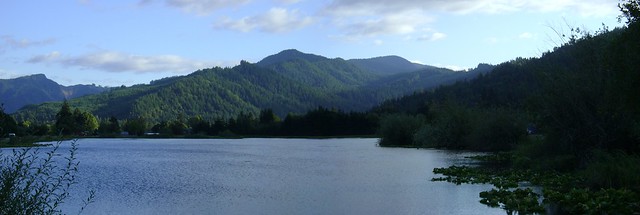
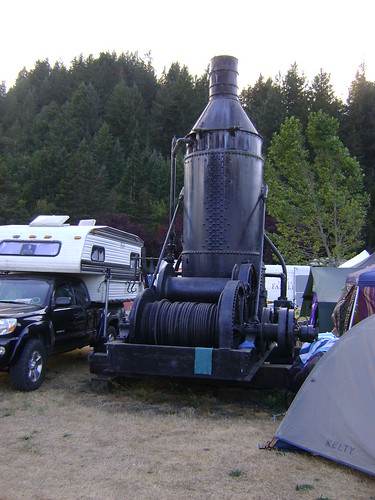
Site of Day 5, Cycle Oregon 2011 in Powers, OR. Old mill pond at Powers City Park.Old mill equipment at Powers City Park. This appears to be a steam powered yarder.
As I was riding into camp I saw an opportunity for another great shot. All lined up were 6 SAG wagons!
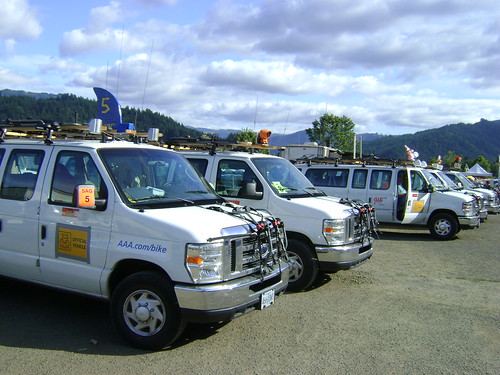
SAG Wagon parking in Powers, OR.
Once settled in camp I dropped my bike off to get cleaned up and took the shuttle bus into town. I stopped at a country store for some ice cream: coconut cream and strawberry cheesecake.
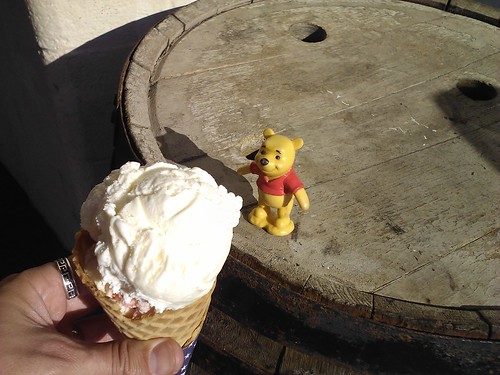
Ice Cream from the Power General Store, Powers, OR. Coconut cream and strawberry cheesecake. YUMM!
Ice cream in hand I walked around town, which didn't take very long. It was obvious that the locals were glad to see Cycle Oregon. Everywhere you looked was a bike painted a single color with a sign on it.
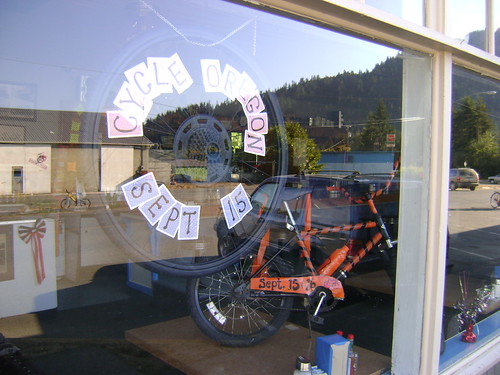
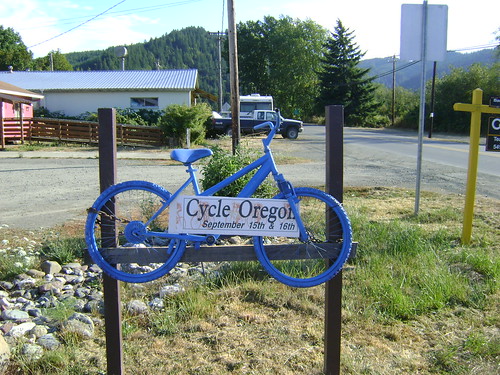
The town of Powers was very excited to see Cycle Oregon.
The local bar had more bikes in the parking lot than cars.
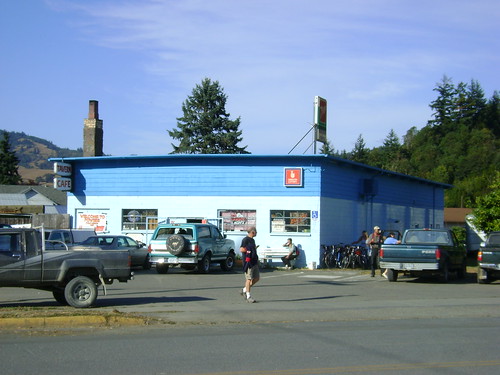
Local saloon in the town of Powers was very excited to see Cycle Oregon. Notice the bikes on the right side of the building? I'm sure this place was hopping well into the night.
I found the Powers Railroad Museum, if you call it that (yet). It is very much a work-in-progress. Its two curators were very happy to greet all the visits. I have never met a museum tour guide with this much enthusiasm. They had more info to share than breath in their lungs.
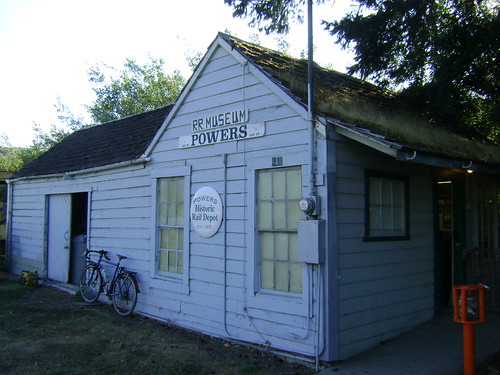
Powers Railroad Museum, Powers, Oregon.
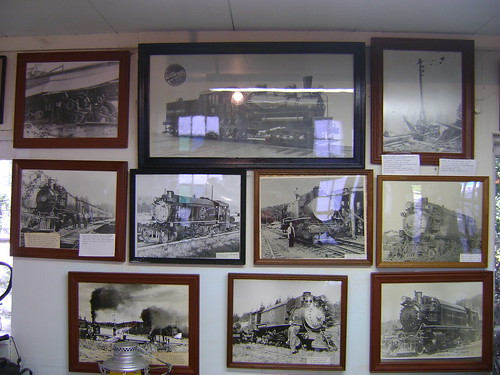
Powers Railroad Museum, Powers, Oregon.

Old mill pond at Powers City Park with a view of our camp.
That night at the evening's entertainment almost the entire town turned out to greet us. The Mayor gave us a great (i.e. short) history of Powers and talked to us about the ride ahead of us: "Look for black bears, cougars, and big foot tomorrow."
Highlights:
Easy ride with only rolling hills.
Great views of the Coquille River.
Incredibly friendly people in Powers.
Powers Railroad Museum
Lowlights:
Should have gone swimming in the Coquille River (I asked some local kids where to swim and they clued me into a sweet swimming hole, which I found the next day).
Not much else!
}B^)
